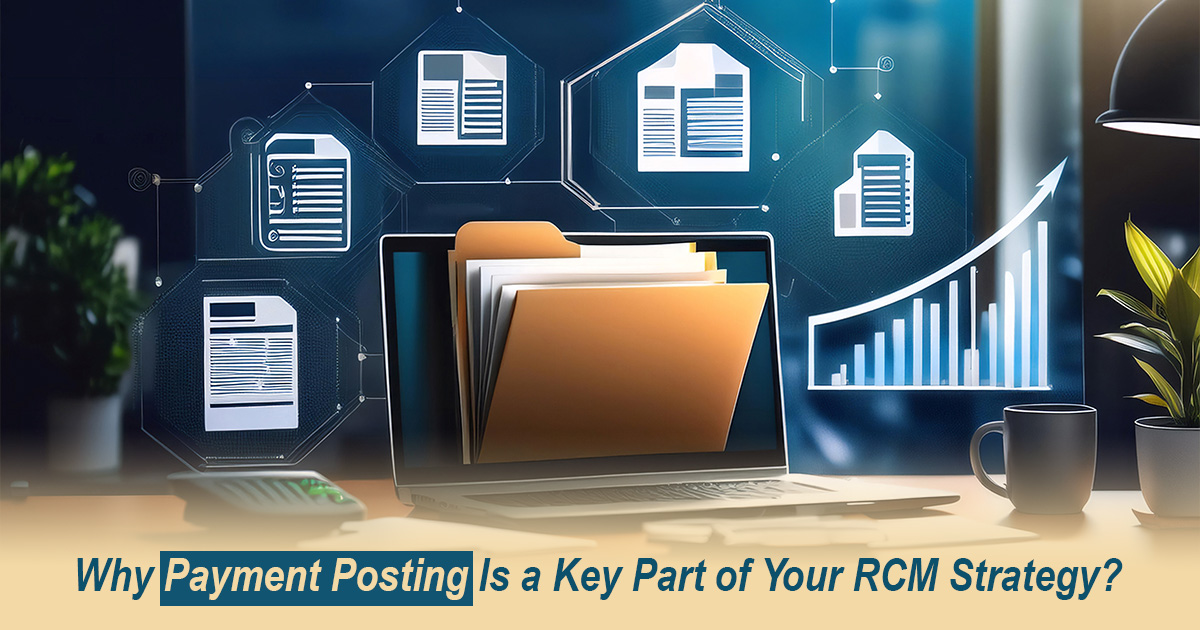In the healthcare revenue cycle, every step matters. Every step has its own significance and importance, but here is the one step that is very essential, is payment posting. This step in the medical billing process plays an important role in helping providers to maintain financial accuracy, reduce claim discrepancies, and promote a healthy cash flow.
At One O’Seven RCM, we understand that timely and precise payment posting is not just a routine task but it’s a pillar of financial clarity and revenue tracking.
Understanding Payment Posting in Medical Billing
Payment posting refers to the process of recording payments from insurance companies and patients into a healthcare provider’s billing system. These payments are associated with patient accounts and individual claims to close the revenue loop.
There are two main types of payment posting:
- Manual Posting: Staff enter payment data manually into the system.
- Electronic Posting (ERA): Data provided by payers can be uploaded automatically is uploaded automatically from electronic remittance files provided by payers.
While electronic posting saves time, accuracy in both methods is essential to ensure the financial records of the practice reflect the real-world reimbursements received.
How Payment Posting Strengthens Your Revenue Cycle
Let’s look at how payment posting supports a stronger revenue cycle management (RCM) strategy:
1. Faster Reimbursement Reconciliation
When the payment posting is accurate, then we must know that billed amount is matched with the received payment. This step is important, because the billing teams can easily check the amount of actual reimbursement and what was the expected payment to be reimbursed. Discrepancies like less payment received then expected amount or partial payments can be check immediately, prompting quick follow-up actions.
2. Supports Denial Tracking and Resolution
One of the biggest benefits of effective payment posting is early detection of claim denials. When insurance rejects a claim, the reason of denial is mention during posting. Billing teams can be able to then act quickly resubmitting the claim, appealing, or correcting errors without waiting for delayed reports. This can directly help in enhancing denial management, one of the most important components of a strong RCM strategy.
3. Improves Financial Reporting and Transparency
Healthcare practices depend on revenue reporting to track the performance, to identify trends, and make decision on budgeting. Payment posting guarantees that the data feeding into those reports is accurate and current. When payments are posted correctly and in real-time, reports show actual income levels, payer behaviors, and aging balances. This promotes better planning and revenue forecasts.
4. Enhances Patient Experience and Billing Accuracy
Incorrect or delayed payment posting may result in payment issues for patients. When payments aren’t posted properly, patients may receive statements that shows incorrect amounts, leading to confusion and frustration. Accurate posting reduces billing errors and supports better patient communication especially during collections and follow-ups. It also helps and explain to the front desk or billing team about what was covered by insurance and what the patient is responsible for.
5. Builds Efficiency Between Teams
When payments are properly posted, everyone in the billing chain, coders, collectors, front-desk staff has access to the same information. This minimizes the errors, reduces mistakes, improves efficiency & coordination across the board. Practice management becomes easier when everyone knows what was paid, what is pending, and what needs to be followed up.
Real-World Example: Why Timely Payment Posting Matters
Let’s say a clinic receives multiple insurance payments for various procedures performed in previous week. If the payments are not correctly posted, then several things may happen:
- Denials will not easily be noticed, appeals may delay.
- Follow-up staff may mistakenly call payers for claims that were already paid.
- Patients might receive incorrect bills.
- Inaccuracy in monthly revenue reports.
If we simply do accurate and timely payment posting, the practice avoids confusion, prevents duplicate efforts, and guarantees that revenue trends are based on real-time numbers.
Tools That Can Help with Payment Posting
As we know that payment posting can be done manually, but most healthcare providers now doing it electronically via ERA files, by using practice management software. These tools automatically match the payments with claims, reducing administrative task and speed up the process. As in recent study of AMA, it describes about 3 ways electronic transactions can help manage payment error, However, no system is perfect without skilled billing professionals to check and manage the process, validate payments, and handle exceptions. The human element still plays a critical role in maintaining financial accuracy.
Why Choose One O’Seven RCM for Payment Posting Services?
At One O’Seven RCM, we specialize in accurate and detailed payment posting as part of your revenue cycle management strategy. We are not only posting numbers, we track patterns, identify payment trends, and help your practice get paid what it deserves. Our approach focuses on transparency, timeliness, and consistency, these are the three principles that enhance financial success in any medical practice.
Final Thoughts
As is often consider as a back-end task, payment posting is a powerful tool in your medical billing toolkit. It helps to detect errors early, tracks revenue accurately, strengthens reporting, and supports better patient billing practices. If you want your practice to grow financially, overlooking this step is not an option. Investing time and effort in proper payment posting leads to fewer surprises, more control, and a smoother revenue experience for both providers and patients.
Contact our Experts to get your payment posting done accurately.

